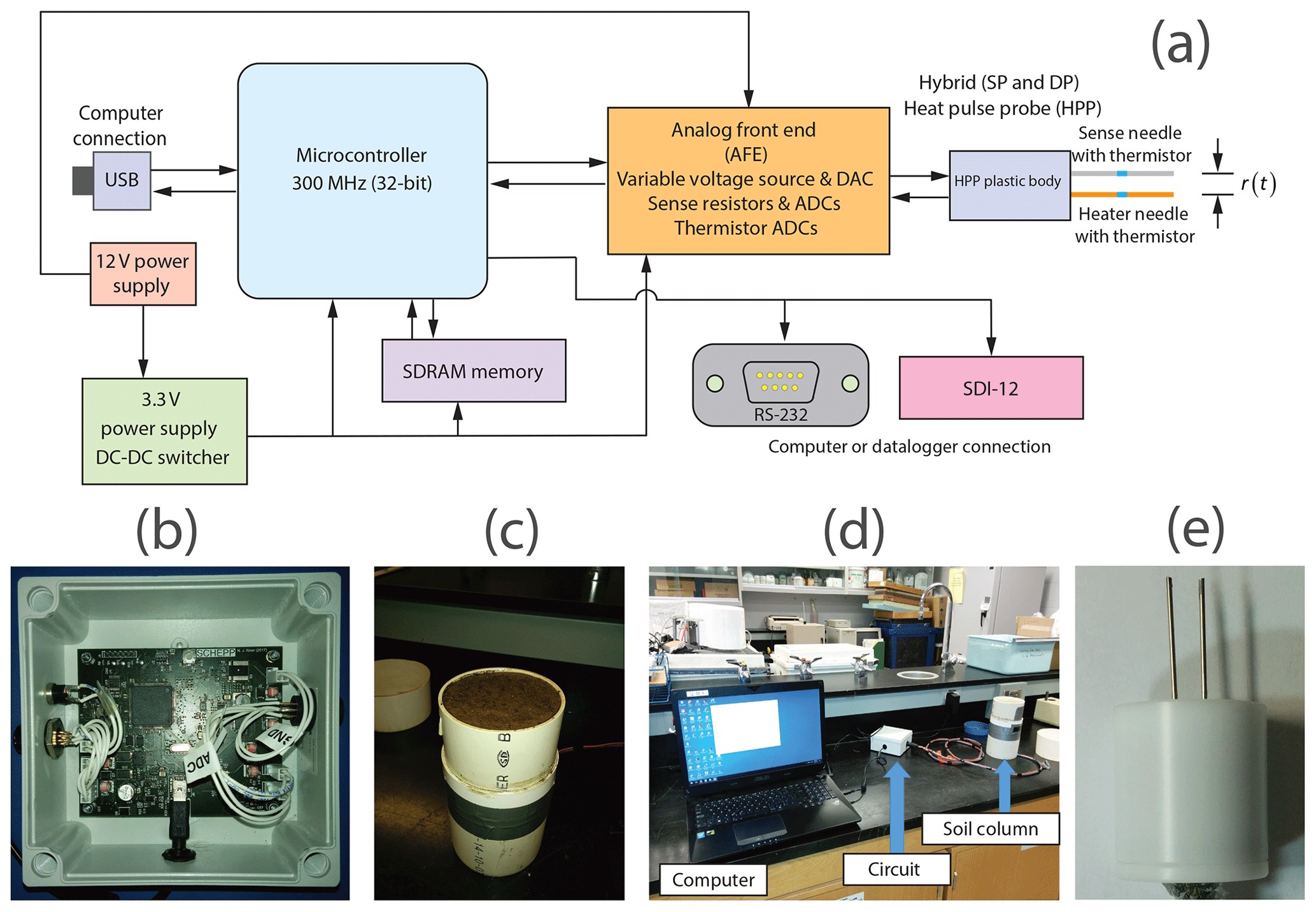Self-Calibrating Heat Pulse Probe (SCHEPP)
- Heat pulse probes (HPPs) are widely used to measure thermal conductivity, thermal diffusivity, density, and water content of soils.
- Single heat pulse probes are comprised of a heater needle and temperature sensor, whereas dual heat pulse probes are comprised of separate heater needles and temperature sensors separated by an offset distance referred to as a probe spacing radius.
- SCHEPP is a novel hybrid single and dual HPP that utilizes a custom electronic circuit and signal processing to detect in-situ changes in probe spacing radius.
- Since probe spacing radius is initially calibrated and assumed to be unchanging over the time of deployment, order-of-magnitude measurement errors can occur when the probe is inserted into the soil or when ice formation occurs in frozen soils.
- Initial testing has demonstrated that HPP measurements are improved by detection of the probe spacing radius.
- The SCHEPP probe will be deployed at SWSL field site locations to better characterize and measure hydrological processes in soils at cold locations.
- A schedule for field installations in the summer of 2021 in Kananaskis, Alberta and Clavet, Saskatchewan is in progress.
- An updated version of the sensor (SCHEPP v2) is being developed to reduce the need for initial laboratory system calibration and to allow for more efficient production of the sensor, thereby allowing for expeditious and multiple deployments for characterization of soil properties.

The SCHEPP System
(a)Sensor flow diagram
- The circuit operation is controlled by a 32 bit microcontroller clocked at 300 MHz by a PLL.
- The microcontroller and associated transceiver circuity implement M2M communications whereby data and system operation can be exchanged between machines using commands sent over USB, RS-232, or SDI-12.
- The microcontroller acts as a state machine that samples data from the AFE and stores the data in SDRAM where signal processing is conducted.
- The circuit is powered by a nominal 12 V DC supply that is reduced to 3.3 V by a DC–DC switcher.
- The HPP is a hybrid SP and DP design comprised of a heater needle and a sense needle.
- The effective distance between the needles as a function of time is r(t).
(b) SCHEPP circuit board
(c) Experimental soil column.
(d) Experimental setup.
(e) Needle probe prototype (Kinar et al., 2020).
Citations and Further Information
- Kinar, N. J., Pomeroy, J. W., and Si, B.: Signal processing for in situ detection of effective heat pulse probe spacing radius as the basis of a self-calibrating heat pulse probe, 9, 293–315, https://doi.org/10.5194/gi-9-293-2020, 2020.
- https://github.com/nkinar/HPP-KinarPomeroySi
